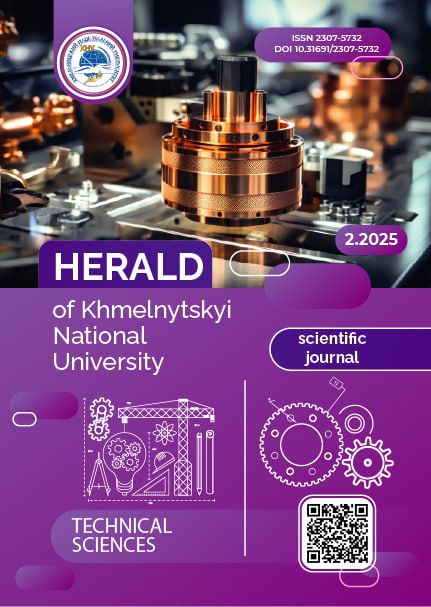SUBSTANTIATION OF THE METHODOLOGY FOR ASSESSING PLANT MASS LOSS WHEN USING RAKE-WADDER TO IMPROVE HAY HARVESTING TECHNOLOGY
DOI:
https://doi.org/10.31891/2307-5732-2025-349-45Keywords:
tedders, rakes, hay, kinematic parameters, plant mass losses, harvesting technologyAbstract
The article considers a wide range of mechanisms used for hay harvesting, including tedders, windrow rotators, rakes and combined rake-tedders. Their design features, functional purpose, principles of operation and classification are analyzed. Rotary tedders are considered separately, which are the main units for loosening grass mass and can perform additional functions, such as scattering rolls. It is determined that rotary tedders have a different number of rotors and can be single- or multi-pair models, depending on which their design features vary, for example, adaptation to soil irregularities and transfer to the transport position.
The study also includes the classification of rakes into transverse, lateral, conveyor and rotary, where each type has its own advantages depending on the operating conditions. Hay rake-tedders stand out for their multifunctionality, the ability to stir grass, rake it into windrows, turn it over and scatter it.
Further, the main aspects of the research were considered, including the design features of machines for stirring and raking mowed fodder crops, the parameters of the working bodies, as well as the kinematic and dynamic characteristics of the rake mechanisms.
Particular attention was paid to the shortcomings of existing methods for assessing plant mass losses during the operation of rake-teethers, in particular, the insufficient accuracy of calculating losses during individual operations. The development of a new method is proposed for a more accurate determination of losses and increasing the efficiency of hay harvesting technology.
The importance of the parameters of the movement of the tips of the rake fingers was also studied, in particular the absolute speed of the tips of the fingers, which determines the trajectory of plant mass particles during stirring and raking. The calculations determined the dependence of the speed on the design and kinematic parameters, which is important for optimizing the processes of stirring, raking and turning grass.
The conclusions emphasize that optimization of kinematic and design parameters of rake-teethers is necessary to minimize losses of plant mass and improve the efficiency of hay harvesting technology. Adjusting the angle of rotation of the fingers and the speed of their movement allows to increase the efficiency of the machines, improve the quality of harvesting and reduce technological losses.
Downloads
Published
Issue
Section
License
Copyright (c) 2025 ІННА ТЕЛЯТНИК, ЮРІЙ ПАЛАДІЙЧУК, ПАВЛО СТЕЦЮК (Автор)

This work is licensed under a Creative Commons Attribution 4.0 International License.

